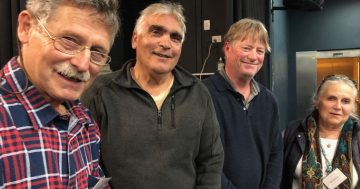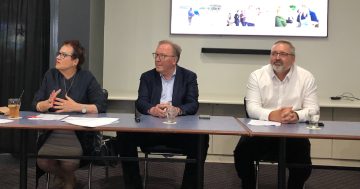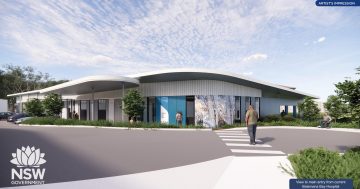
Yuin elders and community members at the site of what will become the Eurobodalla Regional Hospital. Photo: NSW Health Infrastructure.
About 600 artefacts belonging to First Nations people have been unearthed during the works for the new Eurobodalla Regional Hospital.
The artefacts include stone tools and were found during the archaeological works at the hospital’s site in Moruya on the cultural lands of Brinja Yuin.
NSW Health Infrastructure said the project team and archaeologists will work with registered Aboriginal parties to determine what to do with the discovered items.
“The discovery of the artefacts shows clear evidence that our people lived and raised their families here,” Brinja Yuin/Gadu Elder Maureen Davis said.
“They travelled along this section of the land, taking in the sea coast south of the Moruya River to the Wagonga River at Kianga, extending some five miles inland across the landscape.”

One of the many artefacts discovered at the site of the future Eurobodalla Regional Hospital. Photo: NSW Health Infrastructure.
The archaeological work at the site is expected to be completed by the end of May.
Ashleigh Keevers-Eastman, the senior heritage consultant at the environmental consultancy firm Biosis, said four members of her team and eight First Nations site and cultural officers have been working at the salvage site each day.
“Over four weeks, the team have been involved in digging and sieving through approximately 100 sqm of the site, which equates to around 100 salvage pits,” she said.
“To date, we’ve discovered hundreds of culturally significant items, including many stone tools, which shows how Aboriginal people lived and worked on this land thousands of years ago.”
The First Nations community from across the Eurobodalla recently attended a special gathering on site to hear from heritage consultants, Biosis and Brinja Yuin original custodians about the work and the early discoveries.
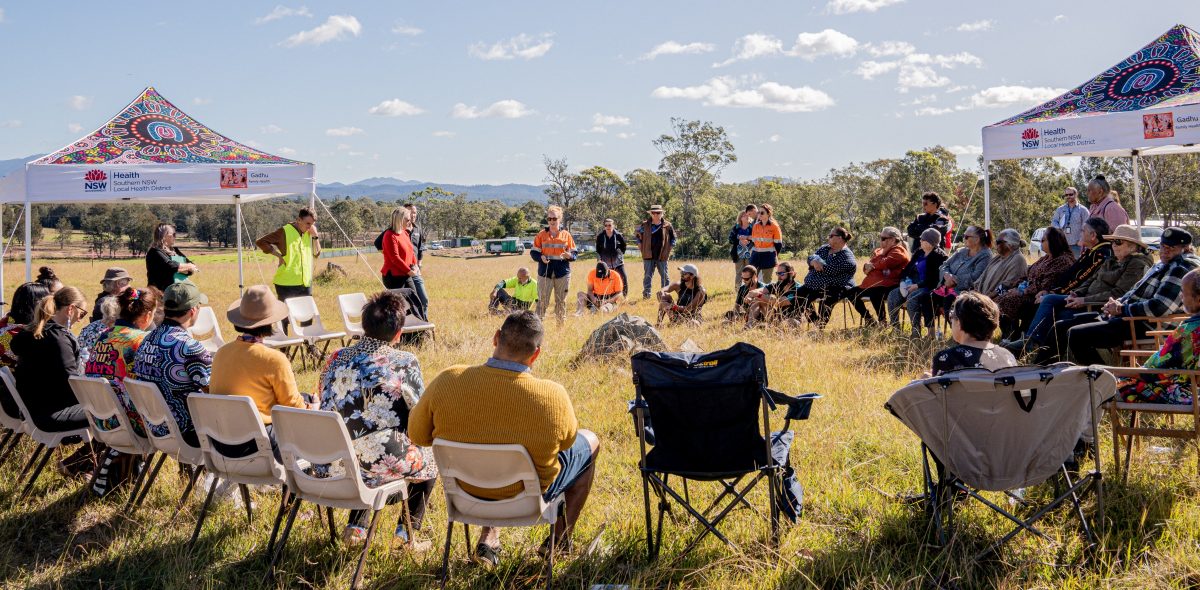
A yarning session took place at the site of the Eurobodalla Regional Hospital on the cultural lands of Brinja Yuin. Photo: NSW Health Infrastructure.
“Traditional owners and elders along with the Cobowra Local Aboriginal Land Council and other registered Aboriginal parties have been working closely with the archaeologists as part of the excavation process to identify artefacts and share their cultural knowledge,” Health Infrastructure executive director of regional and rural projects Amanda Bock said.
“Listening and collaborating with the local Aboriginal community as we uncover these items has provided a wonderful opportunity to understand and learn more about the region’s rich cultural history. We are grateful for their generosity in giving their time and sharing their culture and stories.”
Last September, before the work got underway, a traditional Aboriginal cultural burn was held at the site, the first time a cultural burn has been held on a NSW Health Infrastructure project site.
“For millennia, Aboriginal people managed the land through cultural burning – it was one of our farming and land management practices to care for country,” Walbunja Elder Bunja Smith said at the time.
“Cleansing the land is an integral part of connection with country and restores and rejuvenates the land spiritually.”
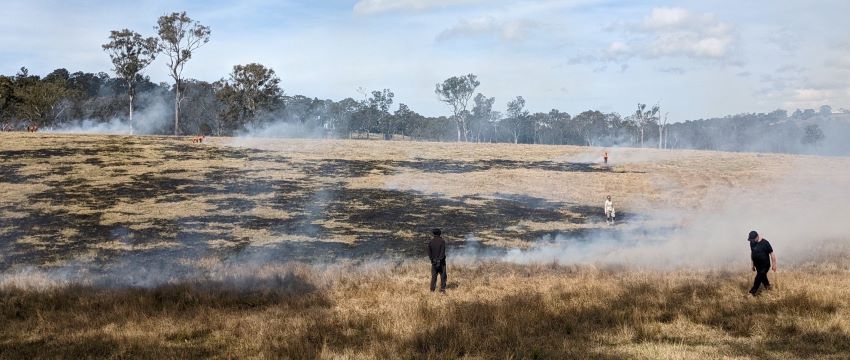
A cultural burn at the site of the future Eurobodalla Regional Hospital in September 2022. Photo: NSW Health Infrastructure.
The $260 million Eurobodalla Regional Hospital’s construction is expected to be completed in 2025 and will be opened with Level 4 capacity.
Earlier this month, it was announced that global construction company Multiplex had been appointed to finalise plans for the hospital.
The hospital aims to support the entire Eurobodalla Shire, from Narooma to Batemans Bay, and will be larger than both Moruya and Batemans Bay hospitals combined, the NSW Government says.
Among its features are an emergency department, an eight-bed intensive care unit, increased capacity for chemotherapy treatments and increased access to renal dialysis, mental health beds, expanded medical imaging, as well as paediatric and maternity services.








